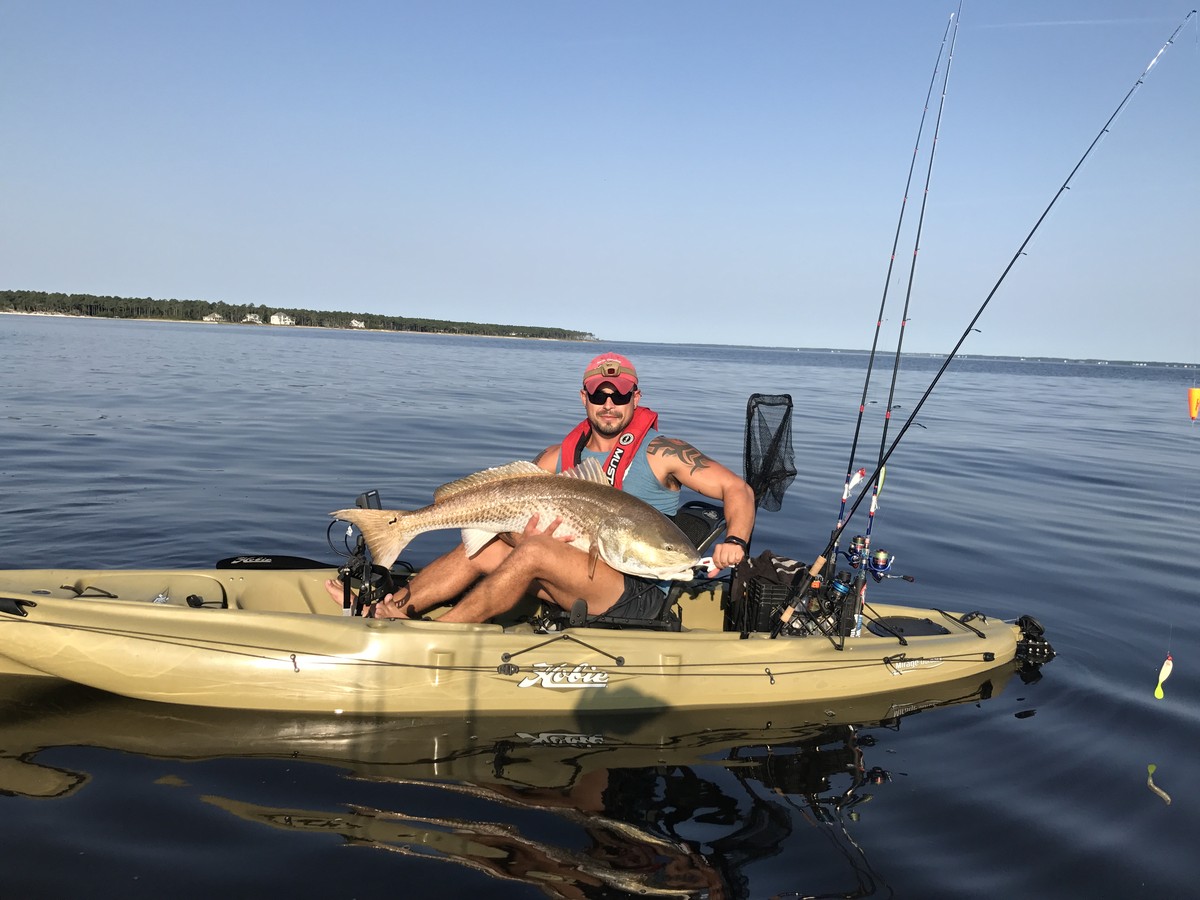
Who doesn’t get excited when their cork goes under? As kids we grow up using a cork with some sort of live bait under it or maybe even as an adult to catch bait. Popping corks for “Old Drum” adds a whole different twist to it. I know at the age of 35 I still get thrilled when mine disappears. When I know it’s a 40- to 50-pound class redfish, pure ecstasy sets in. This can be some of the simplest fishing with some of the biggest rewards. I’ve personally witnessed friends catching their biggest fish ever while doing this.
Usually around the middle of July the breeding stock of redfish make their way into the lower section of the Neuse River in North Carolina. They tend to peak mid to late September and have made their way out by the middle to end of October. For years this was always a bait and wait game, that tended to be more productive at night. This is a lighter gear, more hands on, much more exciting fishery than soaking chunk baits.
These fish are here to reproduce. Proper handling skills should be employed to ensure a successful release. Use gear stout enough to land the fish in a timely manner with a quick release. Once you get the fish to you, its best to release it while still in the water. We know you have to have a photo for proof or a new profile picture. In this circumstance the proper way would be to slide it into your lap and always support the belly where all the organs are. I find it easiest to use a set of fishgrips to slip it in and to also swim the fish beside the kayak while it recovers. This is where the MirageDrive is keen and makes life much easier to lead the fish while pedaling to bring fresh water thru its gills. Once it’s swimming upright on its own and giving that solid tail kick, its ready for a healthy release.

I like to use lightweight gear but not necessarily light action. A Star Stellar Lite medium action rod rated to 20 pound line is my choice. It’s light and has plenty of backbone to put heat on fish of this size. A 4000 series spinning reel spooled with 20 pound braid gives plenty of strength and yardage for those spunky ones that want to test your drag and line capacity. The big-ticket items that brings all of this to success is what comes at the end of the line. What I’ve found to be most productive is a Blabber Mouth popping cork with Z-man Grass KickerZ and a one-quarter ounce HeadlockZ jighead. I like to run about 2.5 feet of 40-pound leader between the cork and lure. The Blabber Mouth popping cork has a huge water displacement and is like ringing a dinner bell to these fish. On the average day, these corks out-perform the standard popping cork 5 to 1 on hookups.
These fish can be found in a variety of areas and depths throughout the river but there are some key areas. First off, if bait isn’t present then the reds don’t tend to hang around. Most people target them along the edges of shoals where the depth changes from a channel and abruptly comes up to shallower water. Another prime area is around the artificial reefs in the river. Target depth is anywhere from 7- to 15 feet but they are regularly caught as shallow as 3 feet. I’m always watching for menhaden to pop on the surface and for hidden schools on the Lowrance side imaging. On several occasions I would see a school of bait on the side imaging and I’d toss over in that direction to immediately hookup. These are schools that I had no clue were there and fish that I wouldn’t have caught otherwise.

To experience redfish of this size with the explosiveness of their character is like no other. At any given time it can quickly become a National Geographic moment. While looking for a tail flick of a baitfish to determine my next cast, not 50 yards away from me, the water starts boiling with redfish exploding on a bait ball. The reds were surfacing and going airborne on a school of mullet. It looked like the stuff you see on TV with tuna and dolphin destroying baits. Hearing the drumming of the males echoing through the hull of the kayak sends a shiver thru the spine. I got a call from a buddy while I was working, to tell me that they could hear them drumming while looking for bait. They started fishing the area and hooked up right away.
These fish may hit it at full cast and the cork never stops moving when it hits the water or they may take it at the very end of the retrieve, right at the kayak. That’s where another big advantage of the Hobie comes into play, the much smaller profile than a boat. Plus, no sound from a motor or even a paddle hitting the water. Just the “gulp” of the popping cork resembling the sound of a surface feeding fish. They hear that “gulp gulp” on the surface and as they’re closing in on the sound, they see your bait quivering down resembling a dying baitfish. It’s a must-have to them. There isn’t much that’s more exciting than seeing the swirl of a huge fish right beside the ‘yak and the cork disappearing with such speed. AYE, I’M HOOKED UP!
Check back weekly for new videos and stories by the Hobie Fishing Top Guns.